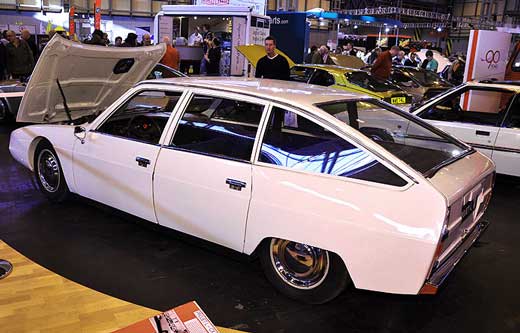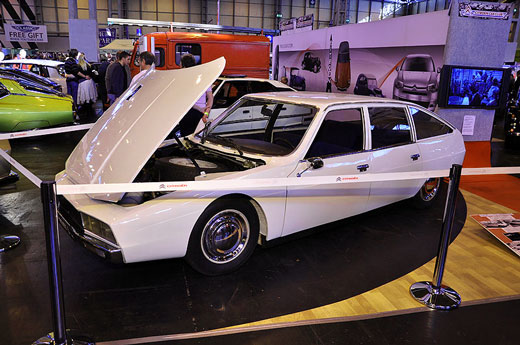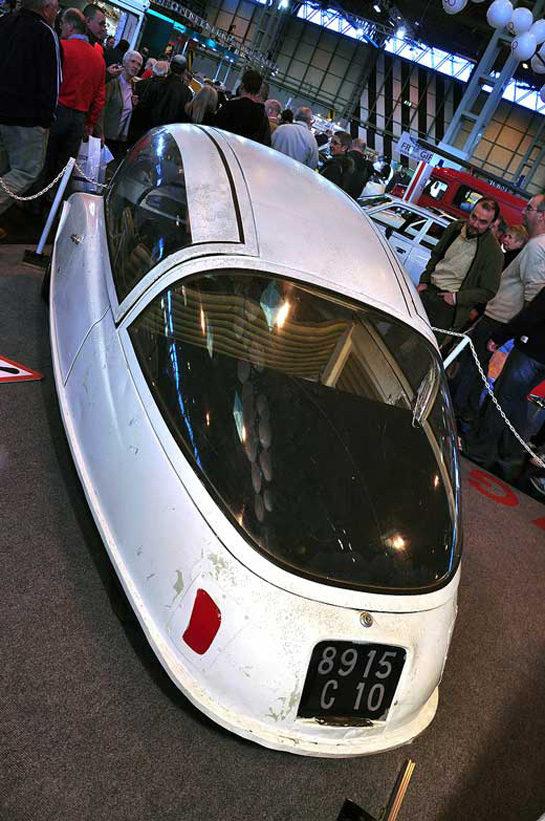We thought it appropriate to run this report with another Citroën article, even though it’s a bit late it is excellent. Read on. [Ed.]
Story and Photos by Simon Wright
To celebrate Citroën’s 90 years of car production, Citroën UK arranged for several rare prototypes to be shown at the Classic Motor show held at the National Exhibition Centre, Birmingham, England from the 13th to the 15th of November 2009.
Coming straight from the Citroën Conservatoire in Paris specifically for the show, three of the vehicles had never before been seen in the United Kingdom (UK), and needless to say, anywhere in the United States.
1956 Citroën C10.
The star of this quartet was the Citroën C10 also known as the “Coccinelle” or beetle due to its shape. The C10 was last in a range of designs starting with the C1, which took shape in the early 1950’s. At the time Citroën had two models, the 2CV and the Traction, both traditional in design. The C design range was a look to the future. The C10, built in 1956, was the culmination of the water drop design idea used in all C Prototypes. Using a front wheel drive design, the front track was much wider than the rear, allowing the design to taper away. Very futuristic in appearance, the car looked like something out of a Dan Dare (UK’s Buck Rogers) comic. The original idea was to use a gull wing door design, but practicalities ended up with the “glass” part of the door going up while the lower half of the door opened in a more conventional manner. To keep the size down, the A series flat twin engine was mounted under the driver and front passenger seats. This allowed the overall length to be only 3.845 metres while still having a 2.45 metre wheelbase. Using aircraft construction techniques, the weight of the body was only 382 Kilograms. The car was fitted with Hydro pneumatic suspension and four wheels, with a very narrow rear track of only 0.6 metres. To keep the weight down, the glass part of the canopy was actually made of Perspex which meant that windscreen wipers could not be used, as they would scratch the windscreen. To get round the visibility in rain problem, the windscreen could be wound down like a normal door window to produce a slot for the driver to see through. Due to the advanced aerodynamic design, no rain would enter the passenger cabin. Unfortunately this design never made mass production, Citroën instead introduced the more conventional designed Ami 6.
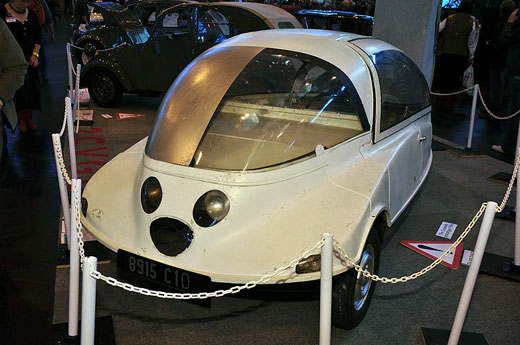
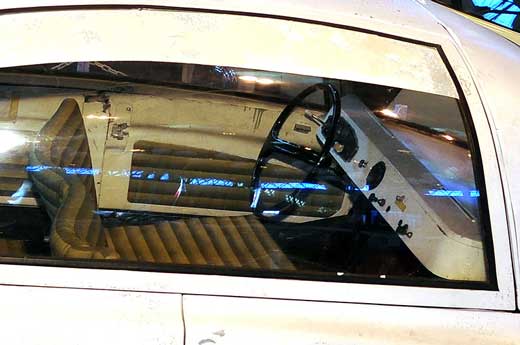
1939 Citroën TPV (Toute Petite Coiture or Very small car) 2CV.
The oldest car of the four special cars was the restored 1939 Citroën TPV or 2CV. Designed by Pierre Boulanger, it bears a remarkable resemblance to the modern 2CV, the basic design never really changed. The front wheel drive car was designed to be a practical car in a similar way to the Volkswagen Beetle. From the initial design it was built to allow easy removal of seats or panels to allow the transportation of larger objects that could not be fitted in to a normal car boot. The production version went on sale in 1948 and like the original Ford Model T, it was available in only one colour – grey. It took until 1959 before blue was added, with yellow models available the following year.
The small, some would say underpowered, 375cc engine was a tiny air cooled flat twin unit producing only 9 horsepower. It also did not feature a distributor, the coil firing the spark plugs direct. The car weighed in at around 1100 pounds and was fitted with a four speed manual gearbox which allowed the car a top speed of only around 40 miles per hour, but did manage nearly 55 miles per gallon of fuel. Drum brakes were fitted to all wheels to provide stopping power. Its quirky feature was the trailing arm front to rear suspension with only one fitted to each side of the car. The original models also had a roof which could be rolled back from the windscreen, giving a cabriolet style. Whilst it may not be the most visually stunning of designs, it achieved what it was designed for, a cheap reliable practical car for the masses and over 5 million have been sold since it was launched.
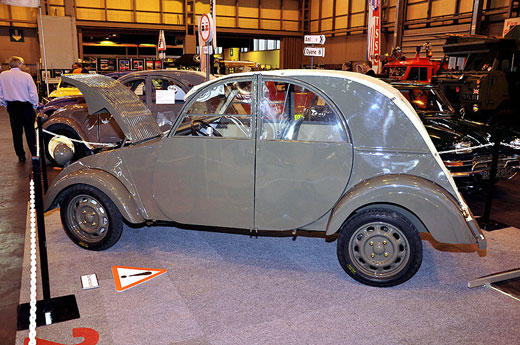
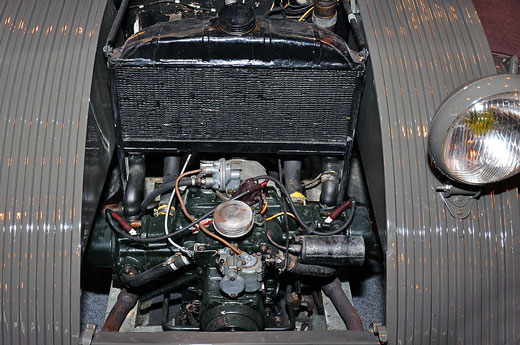
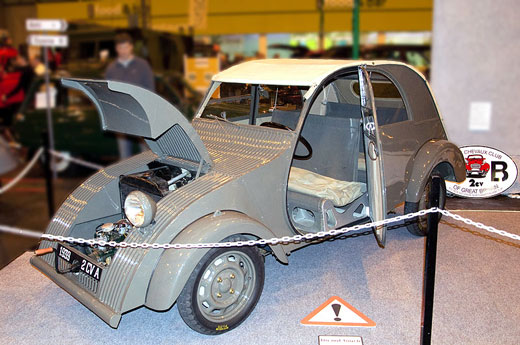
1960 Citroën C60 Prototype.
The C60 was a cross between the Citroën DS and the Ami 6, intending to fill a gap between the two models, as a large car with a small engine to suit French taxation. Designed by Citroën designer Flaminio Bertoni, it was wider than the Ami 6 with a DS style front end while retaining the raked rear window taken from the Ami 6. The interior dashboard was also styled after the DS dashboard. The original design called for either a 1.1 or 1.4 litre front mounted engine. The prototype went for an 1100 cc air cooled flat 4 configuration driving the rear wheels. Development was abandoned due to spiralling costs and the market gap that the C60 was aimed for was not filled by Citroën until much later with the introduction of the GS model.
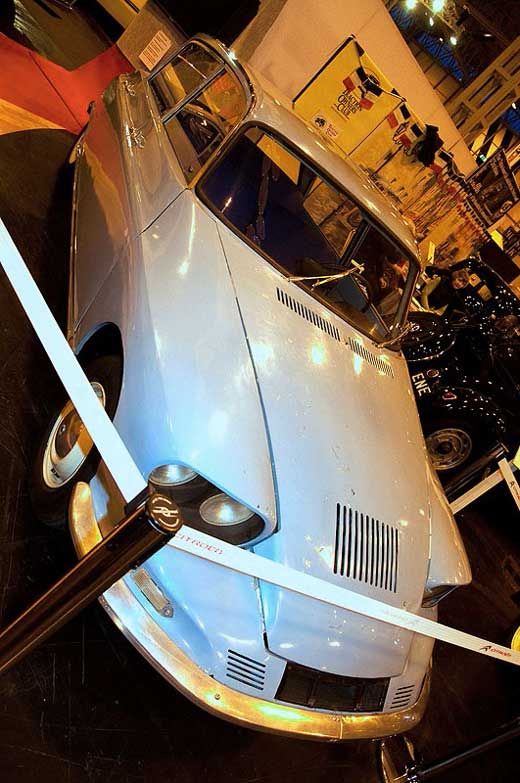
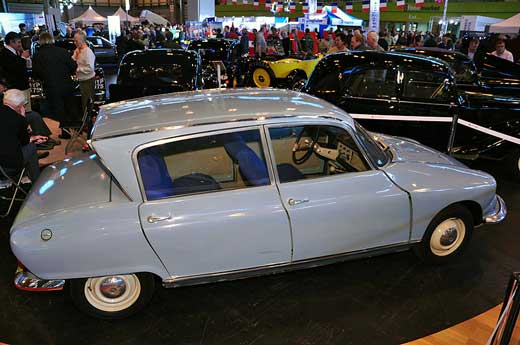
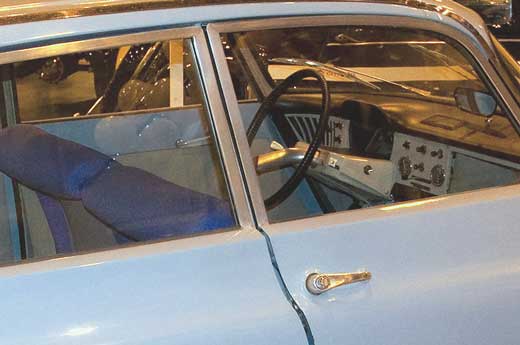
1971 Projet L
The final prototype making an appearance at the show was Projet L which eventually led to the Citroën CX replacing the DS model. This was the last Citroën model to be designed by Robert Opron, before he left the company. His design was probably influenced by a Pininfarina design study made for British Leyland for a replacement for their Austin 1100 and Austin 1800 models as there are great similarities. Some of the early designs also feature a hatchback rear end, but this was not incorporated in to the prototype or the subsequent Citroën CX. The prototype is fitted with a water cooled flat 4 engine and hydropneumatic suspension.
